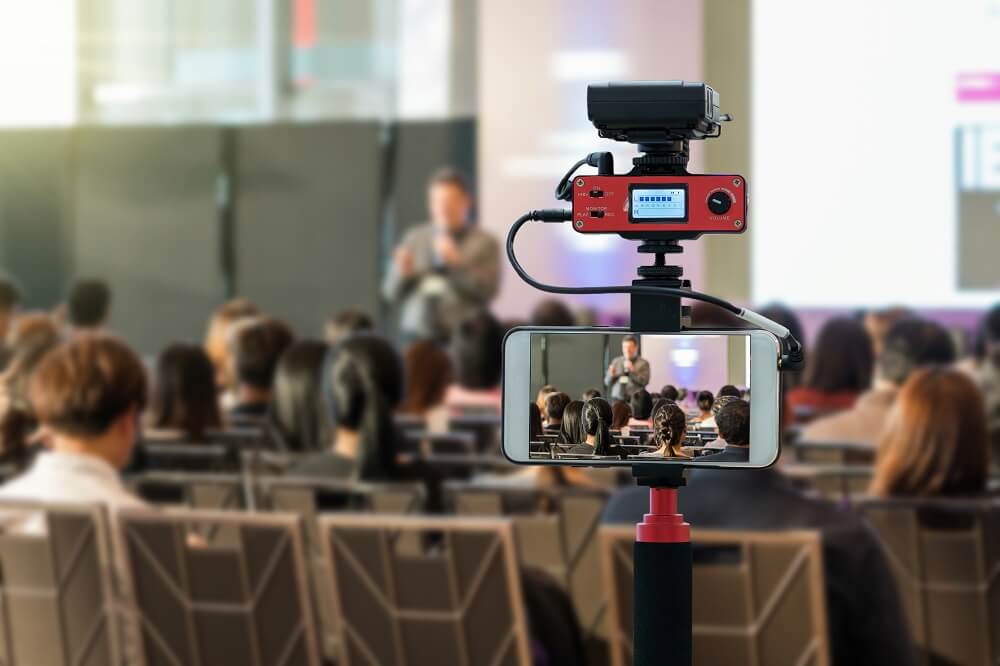A Guide To Multi-Camera Live Streaming
As an increasing number of businesses, marketers, schools, churches, and more, are using live streaming to reach out and engage with audiences online, the quality and setting of live videos are becoming far more important. If a brand wants to stand out, they must offer high-quality and unique streams. Multi-camera live streaming is one way for broadcasters to boost the value and engagement of their live content, by offering viewers multiple angles and changes in scenery.
Zidivo is here to share their tips for streaming using multiple cameras, including everything you will need to get started…
What’s required?
Plan your live stream content as usual in terms of your topic, setting(s) and target audience. Although you’re using multiple cameras, the filming process and equipment required aren’t vastly different, you will just need more cameras and microphones to throw in the mix and a piece of software or hardware known as a switcher.
- Camera(s). Make sure you have two or more HD cameras, though this is dependent on the scale of your production. Filming in anything less than HD these days can impede your message and you will struggle to generate or keep an audience, though this doesn’t mean you need to spend a fortune on top-of-the-range filming equipment. Many brands these days effectively use iPhones or Androids as their secondary feeds as the latest mobiles can now film in an impressive 1080 HD.
When starting out with multi-camera live streaming, keep in mind that there should always be one main camera positioned to offer a wide view and be used as a base for when adjusting other angled shots. Secondary cameras or smartphones can then be used to offer close-up shots or various angles, helping to show your audience the setting and speakers more clearly and add interest.
- Internet connection. The bandwidth of your internet connection will naturally be affected by the number of cameras you plan to use. It’s always best to use an ethernet connection for reliability and test your connection multiple times to make sure it’s sufficient.
- Microphone(s). Your audio is equally as important as your visuals, hence it’s worth using a number of external microphones if you plan to switch between different settings. To make sure there’s no delay between your video and audio, route the audio input through your main camera so it’s fed to your switcher in one stream with your video. Video feeds tend to be a couple of frames slower when switching between cameras so embedding or delaying your audio slightly is essential to maintain a seamless switch.
- Switcher. A vision switcher is an essential tool that provides the means to swap between your different video feeds. Similar to encoders, broadcasters can opt for software or hardware switchers. If you are on a budget and want to keep your physical equipment to a minimum, especially if you will need to easily transport your setup, there are a number of vision switcher platforms, such as Wirecast to benefit from. If not, you can go for hardware such as those produced by Teradek. Though hardware requires more of an investment, having a physical switcher is worthwhile for professionals that aim to use multi-camera live streaming on a regular basis and offer a high production value.
- Encoding software or hardware. If you’re already familiar with professional live streaming, you should have encoding software or hardware already. If not, find the right one to suit your budget and requirements. Software is useful for minimising equipment and can be far cheaper than hardware, though if you’re planning a complex setup with multiple cameras, hardware can be more reliable.
- Live streaming platform. While there are many free ways to stream live video online, such as social platforms, not all of these will support multiple cameras. Using a dedicated live streaming platform like Zidivo is recommended to ensure your streams are consistent and high-quality. The Zidivo platform supports any live stream setup, meaning broadcasters can go live easily and quickly using as many cameras or smartphones as they like. Simply ensure that your encoder is effectively converting your multiple audio and video feeds into one output, to provide Zidivo with one reliable stream.
All in all, multi-camera streams help broadcasters take their video to the next level. When watching live videos, viewers don’t have the opportunity to pause or rewind - offering multiple angles and settings makes your content far more interesting and keeps people engaged for longer. What’s more, it hugely adds to the production value of your streams and allows you to offer a far more professional feel.
Zidivo supports broadcasters that want to offer more interesting and unique live streams, hence their platform supports any setup. Whether a professional wants to stream from one or ten cameras, their features allow for plenty of creative freedom. Get in touch to hear more about the wide range of streaming and hosting services they offer.
Get started with Live Streaming
Start your free 30-day trial with 5GB of bandwidth

